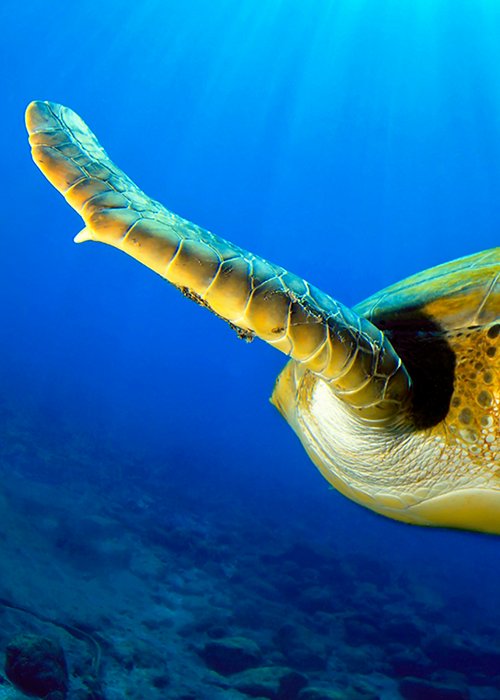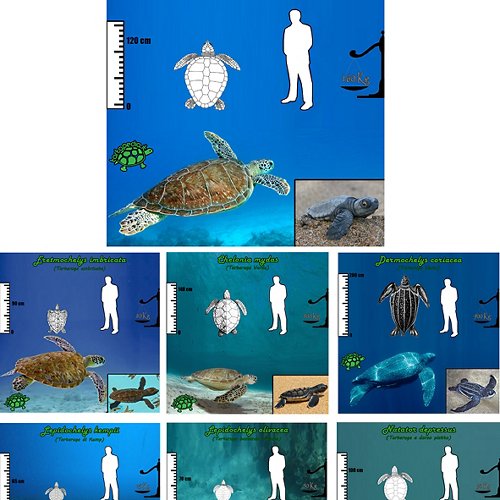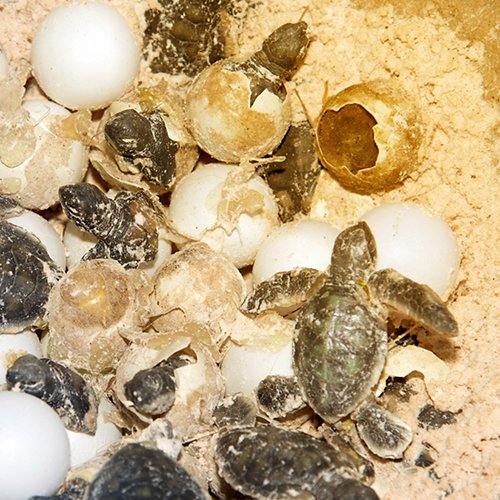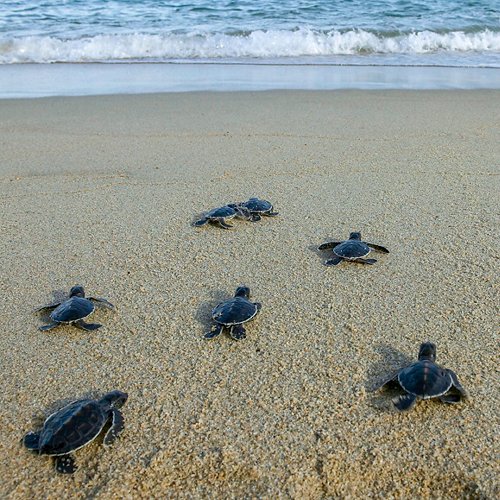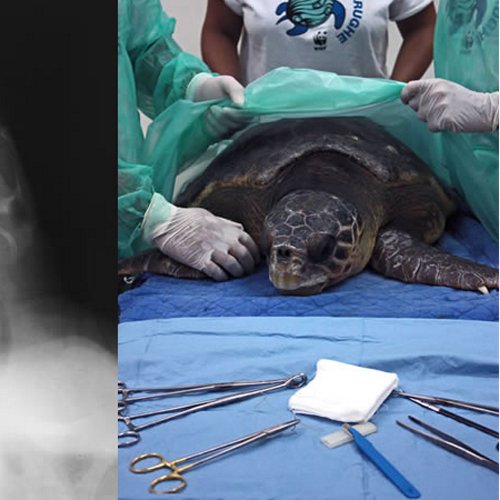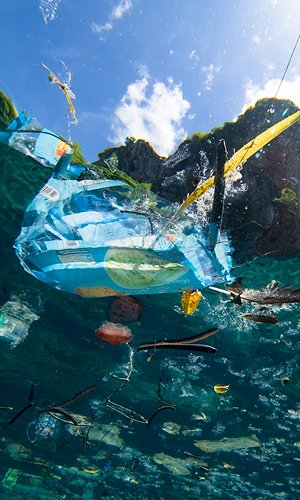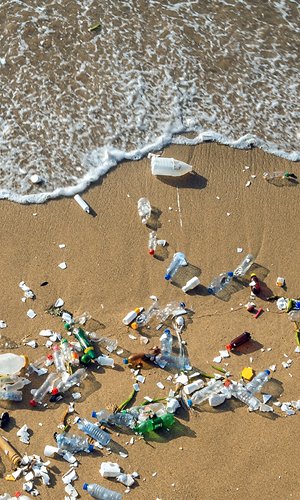World Sea Turtle Day is held on 16 June. First established in 2008, the day is now supported by Sea Turtle Conservancy (STC), which campaigns for the survival of these animals. The day also commemorates Dr. Archie Carr, founder of STC and father of sea turtle biology. World Sea Turtle Day is celebrated on the same day as Dr. Carr’s birthday, 16 June, to honour his hard work to promote the sea turtle conservation movement as well as the scientific legacy he bequeathed to modern researchers.
Let’s learn more about these fascinating marine animals and discover how to protect them!
A little marine biology…
Sea turtles are the oldest living reptiles today. They have been inhabiting the oceans for over 150 million years without having changed their physical appearance. Up to 200 years ago, millions of them populated the oceans’ waters: now they still inhabit the seas and oceans of our planet, but their number has dropped drastically over the past 100 years.
There are 7 species of sea turtles, all at risk of extinction: the leatherback turtle (Dermochelys coriacea), the green sea turtle (Chelonia mydas), the loggerhead turtle (Caretta caretta), the hawksbill turtle (Eretmochelys imbricata), Kemp’s ridley sea turtle (Lepidochelys kempii), the olive ridley sea turtle (Lepidochelys olivacea), the flatback sea turtle (Natator depressus). Of the seven species presently existing, the leatherback, the only one in its family, is the largest. Its carapace may grow to two metres in length and, on average, it weighs around 500 kilogrammes. Kemp’s ridley sea turtle, measuring 70 centimetres in length and weighing 50 kilogrammes, on the contrary, is the smallest.
Many aspects of turtle biology are still not very clear, mainly due to the difficulty of studying animals that live in the sea. For example, how sea turtles find their bearings on their long journeys across the oceans still remains largely a mystery.

